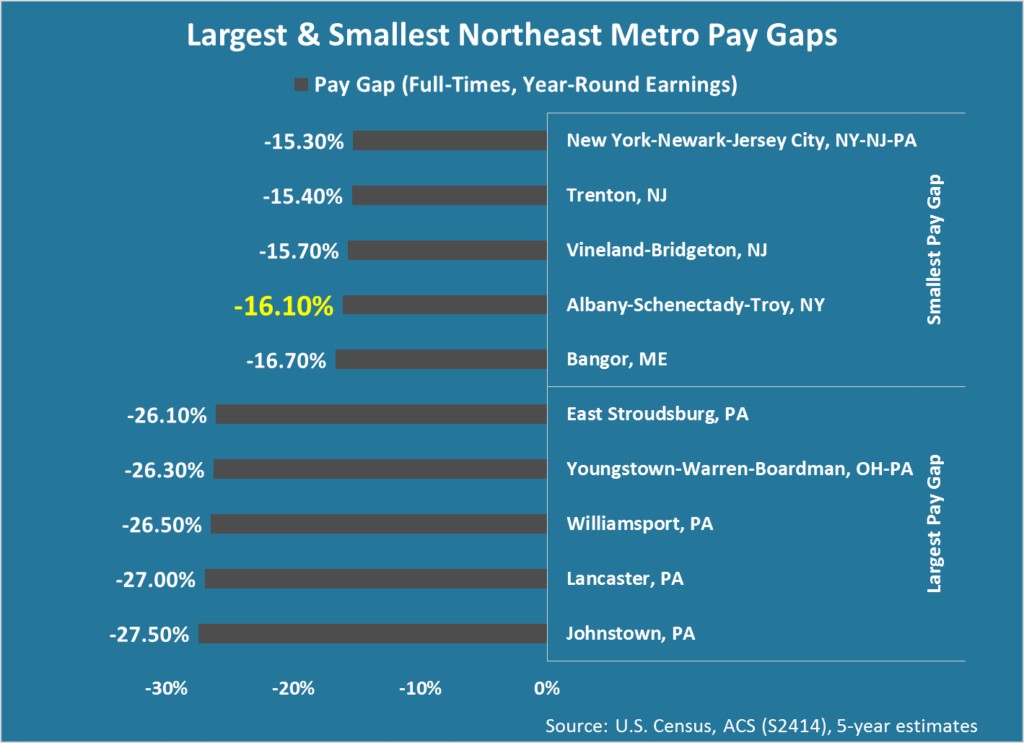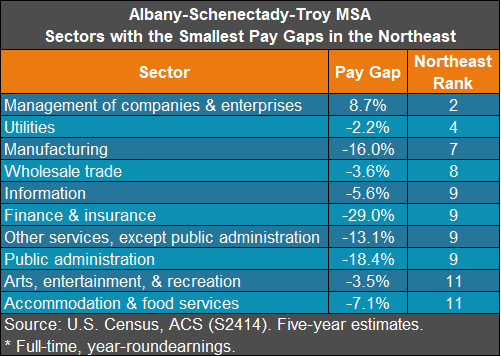Area Has One of Northeast’s Smallest Pay Gaps for Women Working Full-Time
Women working full-time in the Albany-Schenectady-Troy metropolitan statistical area (MSA) face the smallest pay gap in upstate New York and the fourth smallest in the Northeast. Even more, those working in the local management, utilities and manufacturing sectors are closest to earning as much – if not more – than their male counterparts, according to a Center for Economic Growth (CEG) analysis of U.S. Census Bureau five-year estimates.
Northeast Metros
In 2016, the median earnings of women working full-time and year-round in the Albany metro area was $45,628 – the 11th highest in the Northeast. In comparison, the MSA’s median earnings for both sexes was $50,561 and it was $54,388 for men. That put area women’s median earnings as a percentage of men’s at 83.9 percent. In other words, there was a -16.1 percent pay gap between women and men, compared to the U.S. gap of -20.5 percent and -13.2 percent for New York State.
Only three other of the Northeast’s 50 metro areas had a smaller pay gap: New York-Newark-Jersey City (-15.3 percent), Trenton (-15.4 percent) and Vineland-Bridgeton (-15.7 percent). However, when looking at the Albany metro’s dollar value difference between women’s and men’s earnings (-$8,760), its ranking drops to the fifth smallest in the Northeast.

Local Counties
Albany, Rensselaer and Schoharie counties played the largest role in narrowing the Albany metro area’s pay gap. Saratoga County did have the MSA’s largest pay gap, ranking 59th in the state by both dollar value and percentage. However, the county’s median earnings for women working full-time and year-round was $47,906 – the highest in the MSA and the ninth highest in the state.

Local Sectors
The Albany metro area’s management of companies and enterprises, utilities and manufacturing sectors ranked highest among the Northeast metros for the smallest pay gaps. At $78,125, the median earnings of women working full-time and year-round in the management sector actually exceeded that of men’s.

Don’t miss these insights into the trends that are shaping the Capital Region’s economy. Sign up for CEG’s e-news and follow us on:













